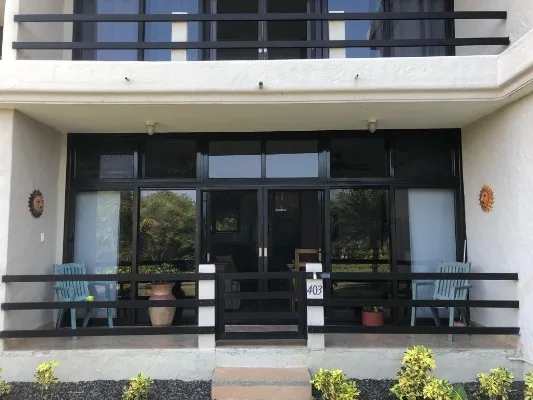CUENCA DIGESTEcuador taking measures to curb crime in three cities; new crime stats show Loja and Cuenca remain the safest cities
Although new statistics show a modest annual increase in crime throughout Ecuador, they also show rapid growth rates in several cities and in northern areas of the country.
On Oct.1, the government announced that it was taking emergency measures to stem the crime tide in Quito, Manta and  Guayaquil, cities it says have seen spikes in gang related activity and drug trafficking. Another concern, particularly in Guayaquil and Quito, are the so-called “express kidnappings,” or “ATM kidnappings,” where Ecuadorians drivers are abducted and forced at gunpoint to take cash from ATM machines before having the cars stolen. The government’s “state of exception” allows the military to work with local police in the three cities, mostly in setting up road blocks to check driver IDs and look for suspicious activity.
Guayaquil, cities it says have seen spikes in gang related activity and drug trafficking. Another concern, particularly in Guayaquil and Quito, are the so-called “express kidnappings,” or “ATM kidnappings,” where Ecuadorians drivers are abducted and forced at gunpoint to take cash from ATM machines before having the cars stolen. The government’s “state of exception” allows the military to work with local police in the three cities, mostly in setting up road blocks to check driver IDs and look for suspicious activity.
According to Ecuador’s National Police, the government is not only focusing on Quito, Manta and Guayaquil, but on much of the northern quarter of the country as well. “The area around Esmeraldas has had high crime rates for many years but we are experiencing more problems now in the sierra,” says Gustavo Esteban, spokesman for the agency. “We are witnessing increases in crime in the entire area from Quito to the Colombian border. Towns such as Ibarra, Cotacachi and Otovalo, where crime has traditionally been low, are experiencing much more criminal activity and we must take action now to keep the problem from getting worse.”
According to Esteban, most of the crime involves counterfeiting and money laundering but, he says, this is leading to violent crime. “When criminals deal with large amounts of money they are willing to do anything to protect their activities.”
Overall, the latest crime numbers show a 3% increase in violent crime since the last survey was taken in 2007. Esteban says that his office categorizes crime as violent and non-violent, and acknowledges that property crime and petty crime are grossly under -reported. “We take all crime very seriously but are especially concerned now with crimes involving violence.”
Of Ecuadorian cities with populations of more than 100,000, the survey shows Esmeraldas has the highest per capita rate of violent crime, followed by Guayaquil, Santo Domingo, Manta, Quito and Ibarra. The cities with the lowest crime rates are Loja and Cuenca in the southern sierra.
Citing both National Police and Interpol statistics, Esteban says that Ecuador continues to have one of the lowest rates for violent crime in Latin America. “It is important that we keep everything in perspective,” he says.
SPANISH ROCK LEGEND ENRIQUE BUNBURY PLAYS SIGSIG TONIGHT
More accustomed to playing venues such as Madrid, Miami, Buenos Aires, Mexico City and Los Angeles, Spanish rock star Enrique Bunbury will perform tonight in the tiny  village of Sigsig, 35 miles east of Cuenca.
village of Sigsig, 35 miles east of Cuenca.
Bunbury, who takes his name from a character in the Oscar Wilde play, The Importance of Being Earnest, says Sigsig is the smallest community he has performed in since gaining fame in the 1990s. “I am honored that they invited me and look forward to playing in an environment different to what I am accustomed to.”
The leaders of Sigsig were stunned when Bunbury, who gained fame with his band Heroes of Silence, accepted the invitation to be part of the village’s foundation ceremony and they admit tonight’s concert presents one of the biggest organizational challenge the community has ever faced. Still, they say they are overjoyed to have the world famous performer in town.
A crowd of more than 20,000 is expected for the show. In an effort to maintain order, Sigsig has banned the sale of alcoholic beverages today and will have more than 500 army personnel on hand for crowd control at the local stadium.
NEWLY DISCOVERED PERUVIAN TOMBS PROVE THE CANAR EMPIRE WAS LARGER THAN PREVIOUSLY THOUGHT
New archeological discoveries in Northern Peru are providing proof that the Cañar civilization reached much further south than previously thought. Several intact burial sites discovered in the Lambayeque region of Peru date to as early as 200 B.C.
The Cañars were traditionally thought to have been confined to the area of the Ecuadorian southern Andes, with pre-historic Cuenca serving as capital of the empire. The Cañars were conquered by the Incas in the 1480s. The Inca’s were apparently impressed with much of the Cañar craftsmanship and incorporated it into their own designs. In Cuenca and at the ruins at Ingapirca, most of the Inca construction was built on Cañar foundations using Cañar stones.
The 12 tombs are located at 8,200 feet elevation in the Andes and are constructed of large stone blocks of different sizes. Archeologists have not yet excavated the tombs. In addition to the undisturbed tombs, scientist founds other tombs nearby that had been looted over the years.
Photo captions: President Rafael Correa personally announced new anti-crime measures for Manta, Guayaquil and Quito; Spanish rock legend Enrique Bunbury





















